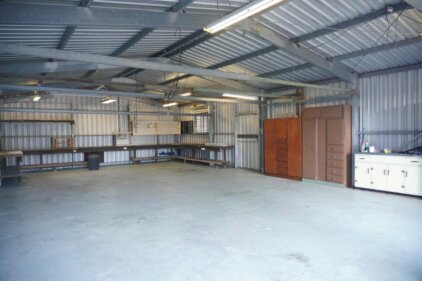There is something truly magical about being able to cultivate your own food right in your backyard. Edible gardening is not only a rewarding and fulfilling hobby but also a way to reconnect with nature and promote sustainability. In this article, I will guide you through the art of edible gardening, from choosing the right location for your garden to harvesting techniques for homegrown produce.
Benefits of Growing Your Own Food
The benefits of growing your own food are numerous and far-reaching. First and foremost, it allows you to have complete control over what goes into your food. You can grow your produce without the use of harmful pesticides and chemicals, ensuring that you and your family consume only the freshest and healthiest ingredients. Additionally, growing your own food is a cost-effective alternative to buying from the grocery store. By investing a little time and effort, you can save a significant amount of money on your grocery bills.
Sustainable Food Production and Its Importance
In today’s world, where food production is often characterized by large-scale commercial farming and extensive transportation, sustainable food production has become more important than ever. By growing your own food, you contribute to a more sustainable food system. Edible gardening reduces the carbon footprint associated with transporting and packaging food, as well as the use of fossil fuels in conventional farming practices. Moreover, it promotes biodiversity by providing a habitat for beneficial insects and pollinators.
Choosing the Right Location for Your Backyard Garden
When it comes to edible gardening, location is key. The success of your garden depends on choosing the right spot that receives adequate sunlight, has good soil quality, and is easily accessible for maintenance. Ideally, your garden should receive at least six hours of direct sunlight each day. Make sure to choose a location that is away from large trees or structures that may cast shade on your plants. Additionally, test your soil to determine its fertility and drainage capabilities. If needed, amend the soil with organic matter to improve its quality.
Planning Your Edible Garden
Now that you have chosen the perfect location for your garden, it’s time to plan what you want to grow. Vegetable gardens are a popular choice among edible gardeners, as they provide a continuous supply of fresh and nutritious produce. Consider planting a mix of both cool-season and warm-season vegetables to ensure a year-round harvest. Fruit trees, such as apple, pear, and citrus, add beauty and flavor to your backyard while providing an abundant supply of fruits. Don’t forget to include herbs in your garden, as they are not only great for culinary purposes but also have medicinal properties.
Permaculture Design in Edible Gardens
Permaculture design is a holistic approach to gardening that mimics the patterns and relationships found in nature. It focuses on creating a self-sustaining and regenerative ecosystem that requires minimal inputs. By incorporating permaculture principles in your edible garden, you can optimize space, conserve water, and promote biodiversity. Use companion planting techniques to maximize the productivity of your garden. For example, planting marigolds alongside tomatoes can deter pests and improve soil health.
Organic Gardening Practices for a Healthy and Abundant Harvest
In order to ensure a healthy and abundant harvest, it is important to practice organic gardening. Avoid the use of synthetic fertilizers, pesticides, and herbicides, as these can have detrimental effects on both your plants and the environment. Instead, focus on building healthy soil by using organic compost and mulch. Implement natural pest control methods, such as attracting beneficial insects and using physical barriers. Embrace the concept of crop rotation to minimize disease and nutrient depletion.
Essential Tools and Equipment for Edible Gardening
To embark on your edible gardening journey, you will need a few essential tools and equipment. A sturdy shovel and garden fork are indispensable for digging and loosening the soil. A hand trowel and pruners will come in handy for planting and maintaining your plants. Invest in a quality watering can or hose with a spray nozzle for efficient watering. Depending on the size of your garden, consider purchasing a wheelbarrow or garden cart for transporting heavy materials. Lastly, don’t forget to protect yourself with gloves, a hat, and sunscreen.
Harvesting Techniques for Homegrown Produce
There is nothing quite as satisfying as harvesting your own homegrown produce. To ensure the best flavor and nutritional value, it is important to harvest your crops at the right time. Different vegetables and fruits have different ripening indicators, such as color, size, and texture. Research the specific requirements of each plant to know when it is ready for harvest. Use a sharp knife or pruners to avoid damaging the plant and store your harvest properly to maintain freshness.
Cheap and Easy Hacks
Backyard farming doesn’t have to be expensive or complicated. There are plenty of cheap and easy hacks that can help you maximize your harvest. For example, create your own compost using kitchen scraps and yard waste to enrich your soil. Use recycled containers, such as old buckets or milk jugs, as planters. Save seeds from your existing plants to grow new ones in the future. Implement rainwater harvesting to reduce water consumption. These small steps can make a big difference in the success of your backyard farming endeavor.





